The Apple iPad Pro Review
by Ryan Smith, Joshua Ho & Brandon Chester on January 22, 2016 8:10 AM ESTFinal Words
Overall, the iPad Pro has proven to be a very different experience for me than previous iPads. The design is definitely familiar, with the same industrial design and general feel as previous iPads scaled up to a 12.9” form factor. However, the change in size is something that feels like it should have been done from the start. Of course, there are people that will carry tablets in cargo pockets that want something closer to a 7” display and people that carry tablets in purses that want a ~10” display, but if you’re like me and the only way you can realistically carry a tablet is in a backpack then the 12.9” size makes far more sense.
It’s also noteworthy that despite this increased size I didn’t really notice that it had gotten significantly harder to handle in the hands than an iPad Air 2. This is likely helped by avoiding placing heavy batteries at the edges of the tablet, which reduces the moment of inertia and associated hand or arm strain from holding the tablet for hours on end. This is especially important when considering the Apple Pencil which makes it pretty natural to hold the tablet with one hand and draw with the other for hours on end.
On the SoC side, we’re finally seeing a major player in ARM SoCs directly competing with Intel on their home ground of sorts, and the results are at least somewhat shocking. Despite a handicap on process node, the CPU of the A9X isn’t all that far off from Skylake Core M. And while A9X can't go toe-to-toe, Apple is for the first time capable of reaching Intel's level for some workloads. Otherwise on the GPU side, Apple arguably bests Intel. While iOS vs. Windows doesn't lend itself to as precise comparisons as we'd like due to some fundamental architectural differences, for a developer writing a GPU-accelerated application tailored for the platform the A9X’s 12 Cluster Series7XT GPU is capable of doing more than the Core M’s Intel HD 515.
Ultimately Apple's Twister CPU core is now the “new normal” for Apple devices, so I’m not nearly as blown away as I was with the iPhone 6s, but I really do have to emphasize that this SoC is incredibly fast. Currently, it has no real competition in the ARM SoC space, and I suspect it won’t for quite some time even in light of new SoCs on the horizon like the Exynos 8890 and Snapdragon 820, as the SoC is tailored for tablet use rather than a smartphone SoC with more thermal headroom. When combined with the Apple SSD present in this device, it’s hard to complain about performance for the most part.
This strong showing in SoC performance, combined with a noticeable amount of work on the display results in a relatively impressive level of battery life. While it isn’t really better than the iPad Air 2 here, the sheer efficiency of the hardware in the iPad Pro means that the battery is smaller on a relative basis despite the large difference in display size. It’s easy to fixate on battery size as the sole determinant of battery life, but that ignores half the equation. The one notable area where efficiency isn’t as good as one might hope is LTE battery life, but I suspect that the impact here isn’t going to be as noticeable as it is with a smartphone as even with our LTE variant I spent most of my time using WiFi to get work done.
From an internal hardware perspective the one real issue here is the rate at which the iPad Pro charges, which is starting to approach unacceptable levels. Future iterations of iPad Pro really need to ship with a much more powerful charger. Even 4 hours to charge is pretty excessive compared to the 3 hours or so that it takes most laptops to charge or the 2 hours that it takes for a phone to charge.
On the display side, Apple continues to ship some of the best displays I’ve seen in the industry. The iPad Pro is no exception, with a relatively bright panel combined with an incredibly good anti-reflective coating to basically eliminate the disadvantages that come with glossy displays. The move to a new display technology also makes for some truly impressive contrast figures for an LCD, although it’s not a competitor to OLED if you only focus on contrast. As an aside, I suspect microLED or OLED is going to have to take the place of traditional LCDs at some point, as OLED is probably going to be unambiguously superior to even the best LCD by the end of this year if the trajectory of improvement continues.
But LCD or not, the iPad Pro’s display also has incredibly good color calibration. Apple does tend to prefer slightly blue white balance, but I suspect this is mostly a trade-off between color accuracy and power efficiency. For color-critical work in areas like medical and creative industries I suspect that the iPad Pro is sufficient due to its relatively low color shift with changes in viewing angles. It’s also interesting to see that there is clearly evidence of Apple’s custom DisplayPort timing controller (TCON) within the system files, but we basically have to take Apple at their word that this TCON is dynamically switching between 60 and 30 Hz refresh rates as I really couldn’t tell that this was happening in practice, or within system files.
While the basics are critical, the iPad Pro earns its “Pro” moniker on the basis of its accessories, the Apple Pencil and Smart Keyboard. The Apple Pencil is unquestionably the best stylus I’ve ever used in any mobile device. I would argue that the Apple Pencil combined with the iPad Pro is probably the single greatest threat to Wacom’s dominance in the professional market today. We can spend all day arguing about how Apple Pencil has no buttons and has an odd charging method, but for $900 USD you can either buy a Wacom Cintiq 13HD Touch or an iPad Pro with Apple Pencil. If the right apps are available on the iPad Pro, it’s pretty much indisputable that the iPad Pro is going to be a better, more elegant solution for getting stylus-related work done.
Outside of creative work, the Apple Pencil is shockingly good as a pencil/pen and paper replacement. Even with the default Notes app I felt like the iPad Pro is far and away superior to carrying around a folder, notebook paper, pencils, pens, erasers, straight edges, and textbooks. I’ve always been looking for a tablet that could be seriously used for academic work, and the iPad Pro is pretty much what I’ve always been looking for. The Surface Pro 4 comes close to be sure, but I would argue that it really isn’t a proper tablet by virtue of how dependent it is on trackpad input. The stylus also just not as well-implemented as the iPad Pro, which is evident as soon as you try to do perfectly straight diagonal lines. In addition to education contexts, I wouldn’t be surprised to see Apple Pencil take off in areas like point of sale registers. While 3D Touch is great, the Apple Pencil managed to surprise me even more. However, the applications of Apple Pencil are somewhat limited to these specific cases compared to the more universal applications of 3D Touch.
The Smart Keyboard by comparison is a bit of a letdown. While I like using the keyboard a lot when I can set it up on a table or something and do nothing but type out paragraph after paragraph, the trouble is that as soon as some other UI interaction is needed the user experience kind of falls apart. Both setting up and taking down the keyboard takes some time, and doing the motions/origami necessary to do this is not something that can be done carelessly as the Smart Keyboard can and will fall apart/behave unpredictably if you don’t put it together properly. In order to really hit it out of the park, the Smart Keyboard needs to be more stable in the lap, have at least one more useful angle, and be much faster to set up/take down. In essence, the hope is to be able to rival a touch keyboard for bring-up/take-down, but introduce the ability to touch type at speeds that touch keyboards realistically cannot hope to rival. I don’t really think it’s reasonable to argue that the iPad Pro with the keyboard set up is an ideal experience for UI navigation, as using the touch screen is about as ergonomic as a touch screen laptop and using the keyboard for navigation only feels an awful lot like using a command line interface.
In fairness to Apple though, the Smart Keyboard is arguably the right direction for tablets to take. We can talk about how the Surface Pro implementation is better, but I’m still not a big fan of using a trackpad on a “tablet,” and pecking at a display with my finger is arguably even worse. The kickstand also has a lot of issues with lap stability as well, although it does resolve some of the concerns with getting the right angle for proper visibility of the display. The problem of text input on a “pro” tablet is one that needs new solutions, and other than the iPad Pro and Pixel C I honestly haven’t seen anything that comes close to getting in the right direction.
On the software side of things, the iPad Pro continues to be one of the few (if not only) tablets that has an OS and UI that is properly designed for a mobile tablet. Microsoft is doing an admirable effort here with Windows 10, but the sheer difficulties that I have with something as simple as high DPI scaling in Windows is just unacceptable for a tablet. It’s also difficult to deal with the sheer number of legacy applications out there, which really complicates control schemes. I found the vast majority of the time I ended up having to use a stylus or trackpad for simple UI interactions because the touch targets were just too small otherwise. Android has some pretty severe issues with making a tablet UI that is more than just a scaled-up phone UI, which leaves the iPad Pro as more or less the only game in town. There are some issues that stem from the lack of ability for apps to really interface with each other and the difficulty of abstracting away the file system, but for the most part I found iOS to be quite good for getting work done.
However, iOS is not a perfect tablet OS. One real problem here is that the multi-window UI isn’t quite as good as it needs to be. While the current list of apps that fully support this functionality isn’t unmanageable, as time goes on I suspect it will get to be rather annoying to scroll through a long list of apps. There’s also the issue of performance. While there was a time when iOS was just incredibly smooth all the time, I’m starting to notice a trend of apps and general UI tasks that show rather concerning levels of frame drops. I’m not really sure exactly when this happened, but something as simple as scrolling through the Notes app shows frame drops on par with scrolling through Google’s Play Store app. This is definitely an area where Apple should focus on improving, as performance problems shouldn't be a concern with a tablet that's as powerful as the iPad Pro.
While the camera is arguably quite low on the list of priorities for a tablet, Apple manages to deliver one of the best cameras in a tablet today. I honestly wouldn’t advise using it as an actual camera, but as a last resort it works quite well. The speakers are also hugely impressive for multimedia use, and probably beat everything else I’ve ever tried on a mobile device, although this is based upon subjective observation. I found that watching YouTube and movies on this tablet is great when paired with the speakers. People that only use headphones for audio might find this feature pointless, but if you’re sitting in bed or in your room watching a movie it’s definitely convenient to not have to put in headphones while getting acceptable audio quality.
Overall, the iPad Pro is an incredibly good tablet. I’ve always liked the idea of a tablet, but for the most part I’ve been deeply dissatisfied with the implementations of tablets. With the iPad Air 2 review I really emphasized how a proper keyboard and a good stylus would really make the user experience much more compelling, and with the iPad Pro we’re finally starting to see movement towards the tablet that I’ve always wanted. The iPad Pro is arguably the first tablet that I personally want to even consider buying. It isn’t perfect by any means, and there is still a lot of work to be done - seemingly fitting for a first-generation Apple device - but for the first time in a long time it feels like the broader tablet market is advancing once again. If you want a proper tablet that can replace pencil and paper with a keyboard for extended typing sessions, I have no problem recommending the iPad Pro. If you're hoping for a laptop that can also double as a tablet, I suspect that the Surface Pro 4 will remain the right choice for you.


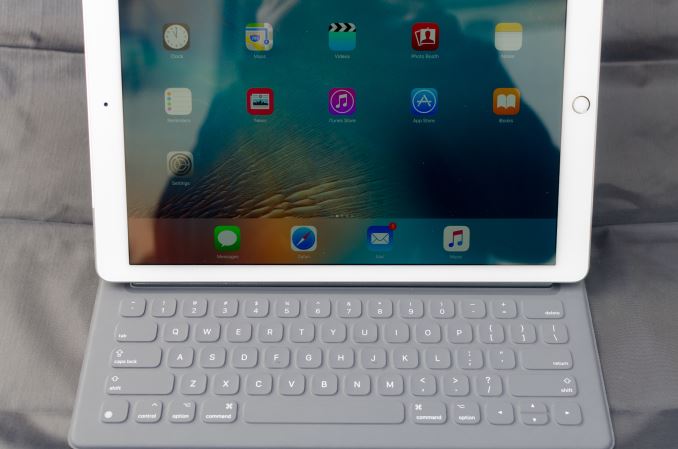
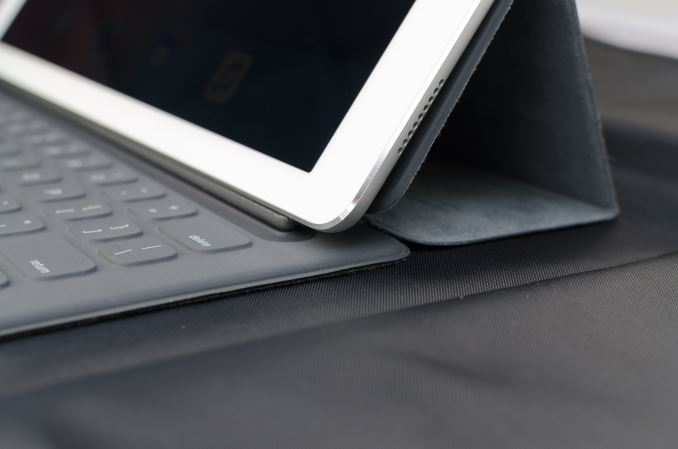

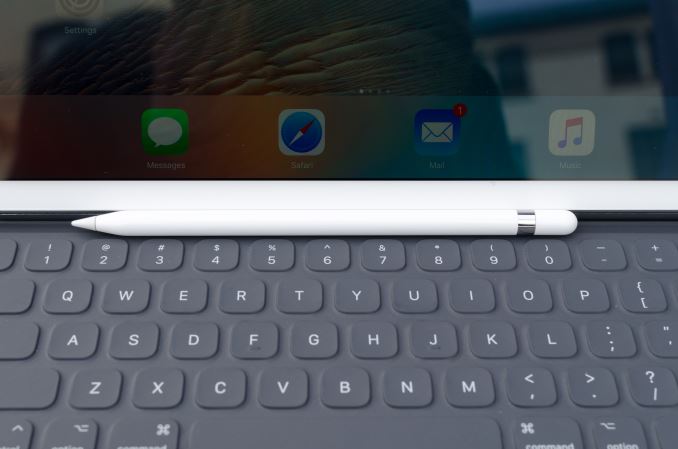
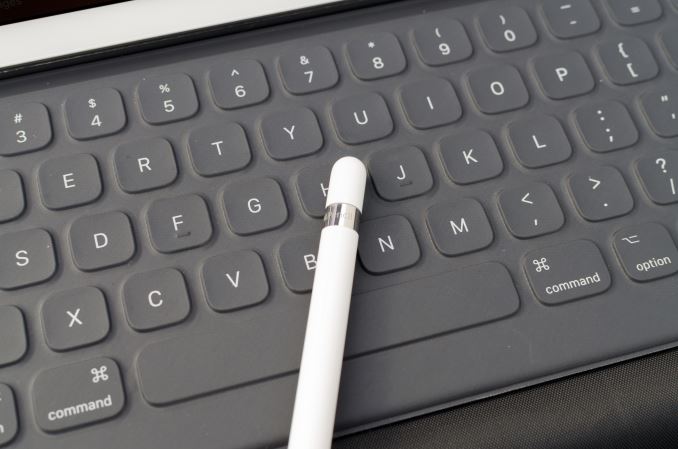

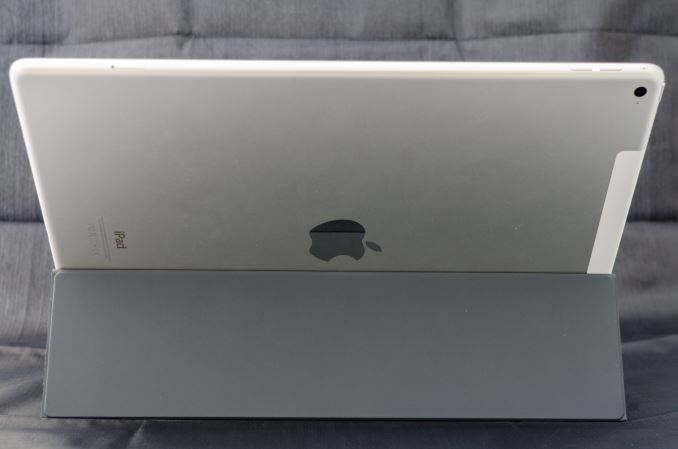
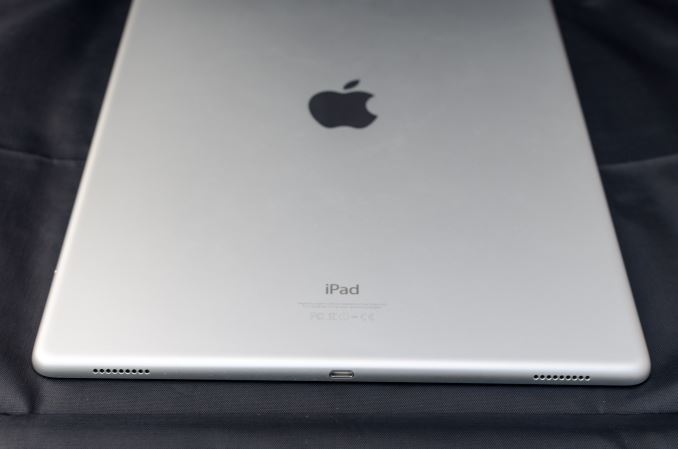
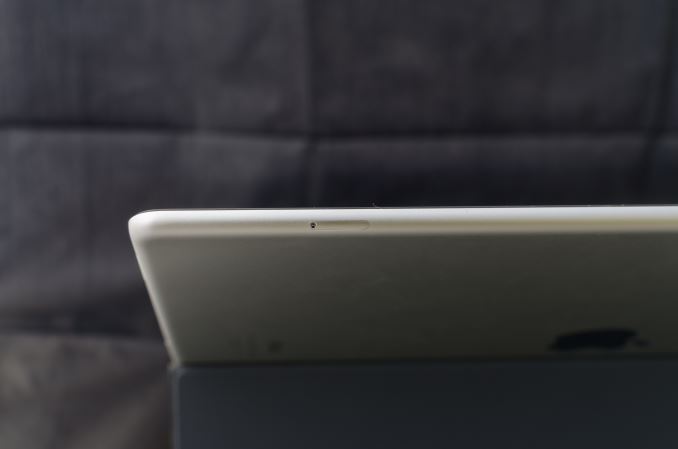
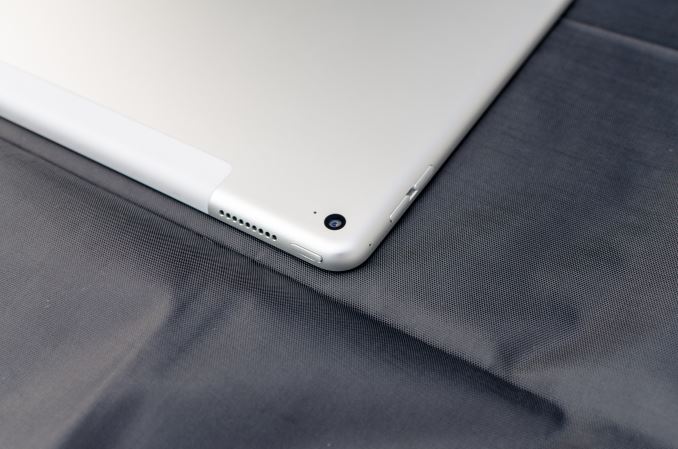
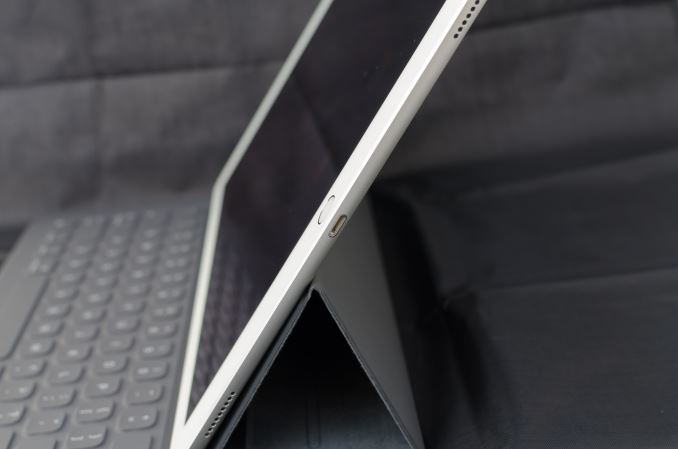








408 Comments
View All Comments
jasonelmore - Friday, January 22, 2016 - link
This, there is no filesystem. The hardware can be as fast as it wants, but it's severely limited by it's input options, and it's locked down nature. A ipad, or a phone for that matter, will never be able to replicate a x86 device. aarch64 is crude in comparison to x86 as detailed in the 2nd page of this article.Sure they can re-write a lot of it, and make a bunch of compramises to make it work, but they wont' waste the time, because:
1: nobody wants to pay more than $10 for apps on the platform because it's seen as a toy and disposable within 4 years
2: Lacks a true filesystem for moving files from physical media, to the devices
3: Lacks precise input methods for quick and ultra precise manipulation of the software (unlike mouse or trackball on pc). Like Slicing a video file, or selecting text and making it Bold, italic, underlined
4: platform lacks pro level payment and upgrade options for developers
Sc0rp - Friday, January 22, 2016 - link
There's a file system, you just don't have access to it.1) Pretty much any computer is disposable in 4 years because the shelf life for hardware before it goes obsolete is about 3 years. Protip: If you 'upgrade' your processor, video card and/or motherboard (!) you just assembled a new computer. It doesn't matter that it is in the same case that your old computer used. Also users are willing to pay more than $10 for software. But, to be honest a lot of legacy developers from the desktop realm have been giving their users the shaft on software prices for years and years and consumers are more apt to pay $6 for an app that actually does that they need rather than $700 for one that does way more than they ever will need.
2) There is a file system. You can plainly see it and interact with it when you use software like iExplorer. Personally, I have no problems with handling files on iOS9 and moving them about.
3) Apple Pencil. Have you heard of it?
4) Actually those options already exist on the platform. I don't know why you think they don't when they so clearly do and have been demonstrated by iOS game developers for years now. You mean to tell me that I can pay $6-20 for a ship or $100 for a bushel of smurfberries but somehow there's no way to add in upgrade options? Dude, just make it optional DLC.
jasonelmore - Saturday, January 23, 2016 - link
keep drinking the kool-aid man.1: apple has succeeded in convincing you that computers are disposable within 4 years. Thousands of schools around the world are using Pentium 4's and Nehalm Pc's. These pc's can run the latest photoshop CC, Office Suite, or any other software that has been made recently.
I know a ton of people using i7 920's and are playing the latest games no problem. With apple, the applications just wont load at all, because they require a certain OS. WIndows 10 Supports very old hardware, and very slow hardware. Same with any flavor of linux. OSX and iOS do not.
2: the file system is not accessible within the device. So your argument is basically this. Use a 2nd machine, install a third party application, and access the files. Really? Pro's don't need a hidden or in-accessible file system, they need file permissions, and only a jailbreak can give that to them.
3: The pencil is a drawing device first and foremost. It is not designed, nor meant to be, a primary way of interacting with the device's OS and applications. Moreover, only one device in apple's entire product history, supports this peripheral. Good luck slicing video with precision. A mouse can hover over a precise point, and offer two context actions via left or the right mouse button. A pencil can hover over a precise point, and do nothing. any actions require tap and hold, and buttons aren't used anywhere except for drawing apps.
4: Developers want to be able to charge yearly fee's for updates, instead of release a whole new app. Like Tweetbot 1, 2, 3,, 4. In-app purchases are not meant for upgrades. They are meant to be used as a glorified "demo" system. You demo the app, and then buy it if you like it. There are a number of articles and reddit posts about developers leaving ios and going with their own distribution platform due to apples store policies. Big developers too, not little ones.
Constructor - Saturday, January 23, 2016 - link
You clearly don't know what you're talking about.1. The iPad 3 which I have just replaced with an iPad Pro has just started its new life for a new user after 4 years of perfectly up-to-date and fully supported use by me. It is still fully supported and almost everything that's available for iOS still runs on it, most of it very well – and that on a device which has about 1/10th of the iPod Pro's performance!
The main reason why you can still use old Windows PCs (or old Intel Macs, for that matter, like I'm doing right now!) without too many disadvantages against new ones is that Intel has entered a prolonged stagnation phase since they've bumped into the end of Moore's Law with their ridiculously outdated x86 architecture. There simply is hardly any movement forwards any more on the Intel front.
Meanwhile Apple is cranking up the performance of their own processors at a speed we haven't seen for a decade on the desktop (it's actually a major achievement that the older iOS devices run as well as they do compared to the multiple times more powerful new ones!).
2. Where I want filesystem access under iOS, I have it. I use Good Reader as my general-purpose local file manager for all kinds of files (including local or remote up- and downloads) and I can use iCloud, Dropbox and others for online shared filesystems. Your imagined problem is pretty much just an imaginary one.
3. The Pencil is a precise pointing device. Which can be user everywhere. It's just not needed most of the time, in part because the touch interface can be used very precisely without it already.
4. Payment is actually a lot easier and simpler than on any desktop platform, and in-app-payment is explicitly not permitted for "demo unlocking". Where it's done well it can unlock additional features, which can be used for featured upgrades as well.
Your whole post betrays above all a profound ignorance about iOS and looks a lot like a panicked attempt to somehow justify why the exact habits you happen to have formed somehow were the only possible way to do anything for everybody.
But as always, the world is not as simple or as limited as that.
jasonelmore - Saturday, January 23, 2016 - link
1: what about the iphone 4, or ipad 2? Stuck on iOS 7 and can't be updated any further2: Physical media? USB drive? Even android can take a thumb drive. This allows android to be more of a traditional computer. You can store ISO's on your phone, EXE's, etc, and use your phone as a mini-laptop for working with other machines. Your goodreader just lets you view the files, so your solution is to email it or dropbox it everytime you need it on a different device? that's what we call a "work-around".
Sending everything over the cloud is not something everyone wants to do, or can do. What if your in a area with no service, or better yet, you don't subscribe to service, and you want to use the phone as a computing device on wifi.
3: again, the pencil is not comparable to a mouse or trackpad. the ipad has no cursor, Your fingers are large compared to a mouse selecting a single pixel on a screen. Main actions, and contextual actions are done via tap, long press, etc.. selecting text on a touch screen should be a good enough example to understand what i'm getting at.
4: did you know apple will not even let you update apps you already own, if your credit card expires, or does not have any money on it?
the fact that you are trying to argue this point, only shows that you have not been following public out cry on this subject. No Paid upgrades, No demo's (very important for expensive pro like apps), no way for developers to respond to bad reviews, at any given time apple can replicate your app, and since apple apps are not sandboxed, they have a inherit advantage. everyone else must be sandboxed, and pay a 30% royalty.
Regarding payment on PC, pretty much everything pro level has gone to a subscription model. If by easy, you mean having a credit card on file for all purchases, then ok, it's easy. But it's also locked down, and like i said, you cant update the app if your card suddenly runs out of money or you go over the credit limit. it will force you to enter a new credit card, just to update a app you already paid for.
look man, if your ok with apple making all the choices for you, then by all means, keep on doing what your doing. but some people have different ideas and want to customize the device to their needs.
i can tell your a fanboy because you started insulting me there at the end, and that only shows your having a hard time justifying what you say to be true. These are not my habits, they are established work-loads that people have been doing on their computers for decades.
you really do need a filesystem to be called a comptuer. and you need a cloud service that is compatible with all platforms and file types. Your solutions to a lot of my arguments is used a bunch of third party programs. a file system is fundamental to computing. there should be a 1st party file explorer (even a restricted one with the option to run root). To deny that access is basically saying "we are apple and we know better, you don't need that option"
Constructor - Saturday, January 23, 2016 - link
1: what about the iphone 4, or ipad 2? Stuck on iOS 7 and can't be updated any furtherWrong again, both directly and contextually.
First, The iPad 2 is still supported by iOS 9.2.1 which is the current version. Only the iPhone 4 has iOS 7 as its latest version.
This is a pretty illuminating comparison of iOS device performance historically:
http://browser.primatelabs.com/ios-benchmarks
(Select Multi-Core results)
iOS 9 now covers a performance range from the iPad Pro down to the iPhone 4S which is 13 times slower.
The iPhone 4 is even 26 times slower, and it only has a single CPU core, contrary to all devices which are still currently supported to this day (including the iPad 2).
And I'm pretty sure you'd be right in front raking Apple over the coals for iOS 9 running less than smoothly on that single-core iPhone 4.
It's actually quite remarkable how well iOS still runs on those over four years old devices after the breakneck performance development of the past years in the iOS space.
2: Physical media? USB drive?
And then where is that floppy drive "everybody knows" is absolutely required..? ;-)
Even android can take a thumb drive. This allows android to be more of a traditional computer. You can store ISO's on your phone, EXE's, etc, and use your phone as a mini-laptop for working with other machines. Your goodreader just lets you view the files, so your solution is to email it or dropbox it everytime you need it on a different device? that's what we call a "work-around".
...and wrong again!
Good Reader can do many things, among them using DropBox. But I can also simply tap a button and Good Reader appears in my local WiFi network (including in the one my iPhone has just provided) as a bog-standard WebDAV network drive which I can directly mount on my Mac, on a PC or on any other mobile device (including on a Good Reader instance running there if I want).
GoodReader can also mount locally available shares and download from these (or upload to them).
I can also throw files to another Apple device purely locally via AirDrop, or I can exchange files locally via Weafo (which appears as a web-server from which anybody else can download the file). And that's only scratching the surface (ahem) of what I could do with iOS since I have simply stopped exploring further for the time being because I haven't needed more than that personally.
You know very little about what's actually possible under iOS.
3: again, the pencil is not comparable to a mouse or trackpad. the ipad has no cursor, Your fingers are large compared to a mouse selecting a single pixel on a screen.
...and that is why there is the Pencil for those rare events where I actually need to address specific pixels. Finger-based UIs can actually be quite precise otherwise, so these needs are actually relatively rare.
Main actions, and contextual actions are done via tap, long press, etc.. selecting text on a touch screen should be a good enough example to understand what i'm getting at.
You can't have actually used iOS devices if you still believe that. Text selection – to take your example – works very well and very precisely by finger touch alone because it is designed for exactly that.
4: did you know apple will not even let you update apps you already own, if your credit card expires, or does not have any money on it?
I've never used a credit card for iTunes in all those years and never had a single problem.
the fact that you are trying to argue this point, only shows that you have not been following public out cry on this subject. No Paid upgrades, No demo's (very important for expensive pro like apps), no way for developers to respond to bad reviews, at any given time apple can replicate your app, and since apple apps are not sandboxed, they have a inherit advantage. everyone else must be sandboxed,
"Outcries" about Apple are the norm rather than the exception. And of course there are valid points to be made in multiple directions. But the measure of the App Store is where there is one that actually works better for a) the users and b) the developers.
There isn't one.
So Apple may not actually have made all the wrong compromises there, as inconvenient as some of them may be for some people. Perfection sounds nice, but actually achieving an actually workable solution is much harder than just clamouring for one.
and pay a 30% royalty.
Ouch. Again with the cluelessness!
First up, these 30% are no "royalty" as pure profit for Apple as you appear to believe, they cover all the costs of distribution including minimum payment transaction charges which are quite substantial as a ratio at the very low item prices in the App Store (no, the percentages you've heard of don't apply there – the minimum charges are much higher than that!). They also cover all other fees and expenses, also including cross-subsidies for the large number of distribution of free apps.
That all the other app stores have never been able to undercut Apple here should have given you a hint or two: It's pretty much run at cost, at Apple as much as anywhere else.
look man, if your ok with apple making all the choices for you, then by all means, keep on doing what your doing. but some people have different ideas and want to customize the device to their needs.
You don't even know what can or can't be done with iOS as it is, and yet you're all about sweeping generalizations.
i can tell your a fanboy because you started insulting me there at the end, and that only shows your having a hard time justifying what you say to be true. These are not my habits, they are established work-loads that people have been doing on their computers for decades.
I'm simply fed up with always the exactly same ignorant cow manure being shoveled all over the place by people who are full of prejudices but empty on actual knowledge of the topic, let alone actual, practical experience.
you really do need a filesystem to be called a comptuer.
Rubbish. I could just as arbitrarily claim that if you didn't have a HiDPI screen your machine was a mere toy and "completely unusable" for any serious uses just because that's what I fancied most.
In real life with real use I need solutions which are appropriate to my actual needs. Stomping your foot and throwing tantrums when you can't replicate exactly the same workflow you happened to have earlier is silly and shortsighted.
Successfully working with IT has always meant adapting what was actually available to what one actually needed and being creative at getting both together for as much pragmatic efficency as feasible.
Crybabies whining about their bygone habits and preferences have always been left behind in the process when new opportunities appeared on the scene.
and you need a cloud service that is compatible with all platforms and file types. Your solutions to a lot of my arguments is used a bunch of third party programs. a file system is fundamental to computing. there should be a 1st party file explorer (even a restricted one with the option to run root). To deny that access is basically saying "we are apple and we know better, you don't need that option"
It is as if you haven't paid any attention for the past nine years.
iOS is a safe, stable and still extensible mobile platform which can run third-party software. This was extremly hard to achieve, and Apple forced a lot of compromises regarding "hackability" because of it. I get how that rubs many people the wrong way (not least as a developer myself, even if not for iOS so far), but as someone who has developed and handled substantially complex, extensible systems (some from the ground up) I am very much aware of where crucial decisions have to be made for something like that, and between which alternatives these decisions have been in major cases.
And the very real stability and safety (including privacy protection!) which actually results from Apple's decisions is hard to deny.
I'm not at all denigrating your preference for completely different kinds of systems where many decisions have been made completely differently, but your problem here is that you don't seem to be aware what these criteria and these options even are when it's about the creation of a major platform.
One can easily disagree with many of Apple's decisions and rules, and that aplies to myself as well in various cases, but actually being aware of why Apple is handling many things the way they do is actually relevant here, and in most cases it's actually knowable.
You'd be much better off if you started at least questioning some of your evident prejudices and preconceived notions at the very least for some broader perspective – which is valuable even if your conclusions for your own system preferences end up in exactly the same place as they do now, just not out of sheer ignorance any more.
Morawka - Saturday, January 23, 2016 - link
Good reader requires you to be on the same network as the machine you want to share files with. Some networks do not even have wifi ap's so your sol in that regard. The only workaround I've found is to pack around a nano wifi router that can run off a battery pack, and physically hook it into the network (if you even have access to the ports). ita really just a file viewer with a few nifty features, but it does not excuse the lack of a native solution. Micro usb otg thumb sticks are the shit. No worrying about sensitive files over the network.MaxIT - Saturday, February 13, 2016 - link
You are becoming ridiculous... Are you really complaining because a smartphone from 2010 isn't supported anymore in 2016 ? Lol at you ...Tell me about HTD Evo or Google Nexus One, both android flagships from 2010 .... They were death and buried by 2012 .....
FunBunny2 - Saturday, January 23, 2016 - link
-- bumped into the end of Moore's Law with their ridiculously outdated x86 architecture.not true, strictly speaking. years ago Intel stopped executing the ISA in silicon, and went with an emulator which ran "micro-code" on a "micro-architecture". the real processor (ALU, etc.) in a X86 chip is some RISC machine; which gets changes each tock. whether this is really more efficient than using those billions and billions of transistors to do all of X86 in silicon is a question I've never seen answered.
Constructor - Saturday, January 23, 2016 - link
Exactly: They have been forced to build a real-time hardware cross-assembler into their CPUs because that was the absolute last resort to get ahead at all any more. Absolute madness, and close to a miracle that they've pulled that off at all, even with the substantial penalties that entails.The ARM64 ISA, by comparison, is completely new, legacy-free and was designed from scratch for optimal execution efficiency. It's not even backward compatible to ARM32. The two are completely different, much more different than x86 and AMD64.
ARM CPUs generally don't need any microcode – they can decode and execute the instruction stream directly, and complications are kept to a minimum (just consider, by comparison, what an Intel CPU needs to take care of internally when processing asynchronous high-priority interrupts, for instance!).
Intel has always completely botched their basic ISA designs. Remember the original x86? What a horrendous, incompetently conceived turd! The painful iterations after that were hardly any better, and If AMD hadn't helped them out with AMD64 (which given what they had to start from was actually somewhat decent), if they hadn't put everything in chip design and manufacturing and if the Microsoft monopoly hadn't afforded them a perfect base for their own monopoly, they would have been toast a long time ago already.
The declining Windows PC market, however, is not a good portent at all for Intel specifically, especially when looking at the continuous profit erosion of the dwindling number of PC manufacturers.
The era of the ascent of the Windows PC is over. The rollercoaster car has just passed the top of its climb.